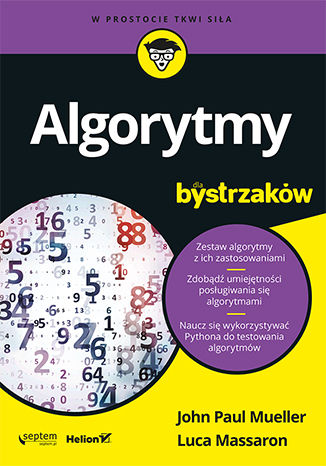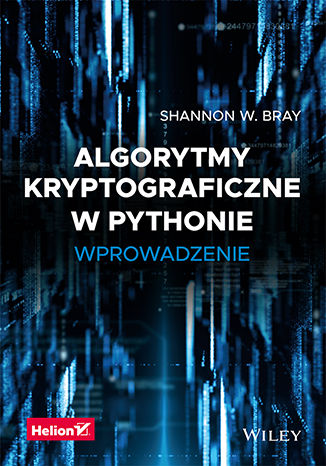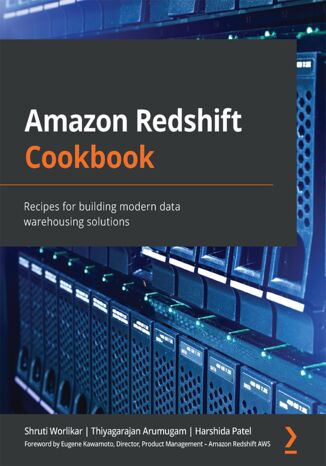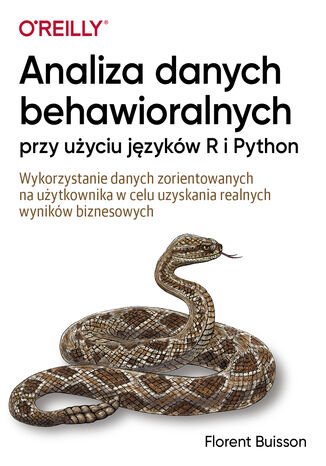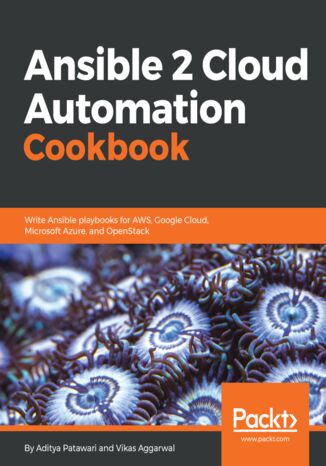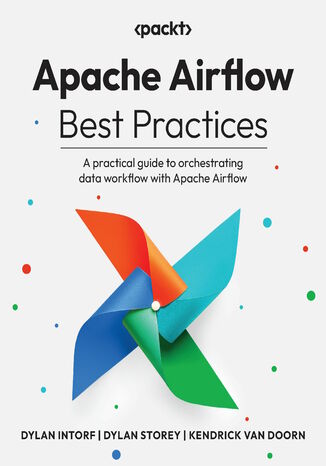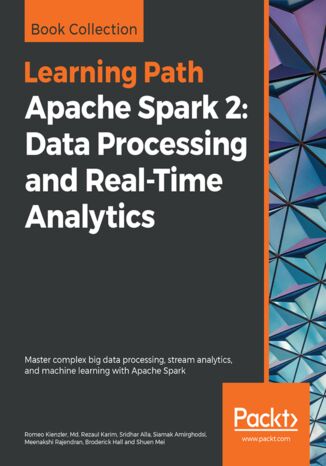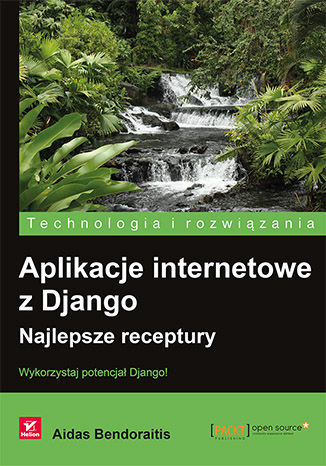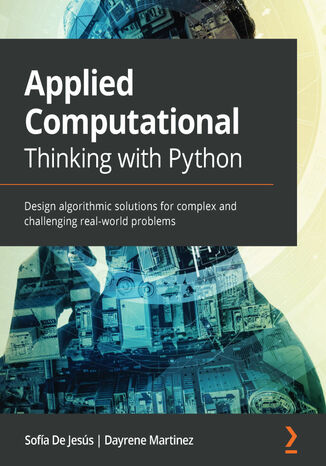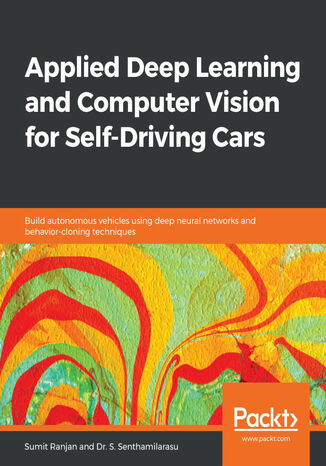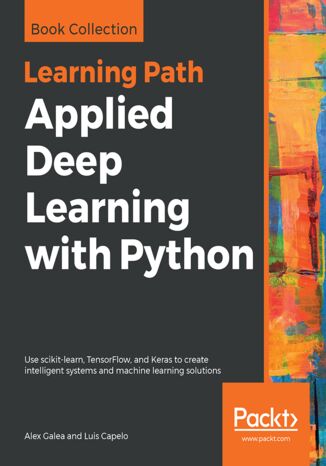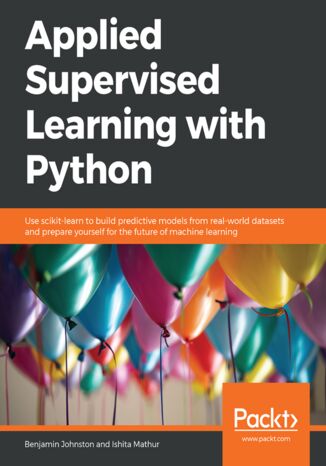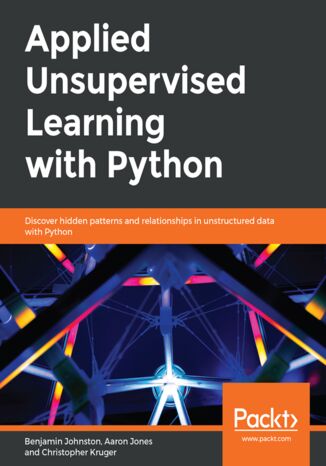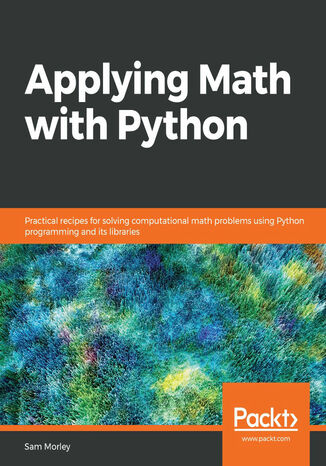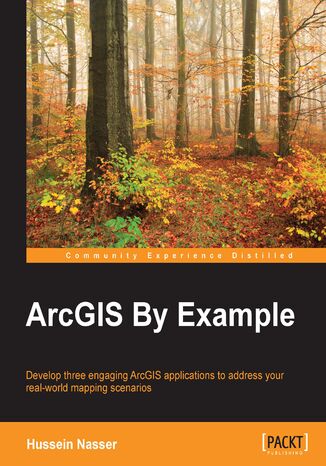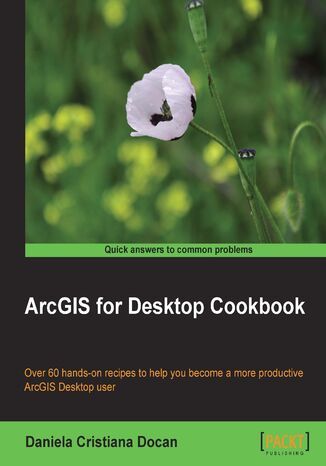Kategorien
E-Books
-
Wirtschaft
- Bitcoin
- Geschäftsfrau
- Coaching
- Controlling
- E-Business
- Ökonomie
- Finanzen
- Börse und Investitionen
- Persönliche Kompetenzen
- Computer im Büro
- Kommunikation und Verhandlungen
- Kleines Unternehmen
- Marketing
- Motivation
- Multimedia-Training
- Immobilien
- Überzeugung und NLP
- Steuern
- Sozialpolitik
- Handbȕcher
- Präsentationen
- Führung
- Public Relation
- Berichte, Analysen
- Geheimnis
- Social Media
- Verkauf
- Start-up
- Ihre Karriere
- Management
- Projektmanagement
- Personal (HR)
-
Für Kinder
-
Für Jugendliche
-
Bildung
-
Enzyklopädien, Wörterbücher
-
E-Presse
- Architektura i wnętrza
- Sicherheit und Gesundheit am Arbeitsplatz
- Biznes i Ekonomia
- Haus und Garten
- E-Business
- Ekonomia i finanse
- Esoterik
- Finanzen
- Persönliche Finanzen
- Unternehmen
- Fotografie
- Informatik
- HR und Gehaltsabrechnung
- Frauen
- Computer, Excel
- Buchhaltung
- Kultur und Literatur
- Wissenschaftlich und akademisch
- Umweltschutz
- meinungsbildend
- Bildung
- Steuern
- Reisen
- Psychologie
- Religion
- Landwirtschaft
- Buch- und Pressemarkt
- Transport und Spedition
- Gesundheit und Schönheit
-
Geschichte
-
Informatik
- Office-Programme
- Datenbank
- Bioinformatik
- IT Branche
- CAD/CAM
- Digital Lifestyle
- DTP
- Elektronik
- Digitale Fotografie
- Computergrafik
- Spiele
- Hacking
- Hardware
- IT w ekonomii
- Wissenschaftliche Pakete
- Schulbücher
- Computergrundlagen
- Programmierung
- Mobile-Programmierung
- Internet-Server
- Computernetzwerke
- Start-up
- Betriebssysteme
- Künstliche Inteligenz
- Technik für Kinder
- Webmaster
-
Andere
-
Fremdsprachen lernen
-
Kultur und Kunst
-
Lektüre
-
Literatur
- Anthologien
- Ballade
- Biografien und Autobiografien
- Für Erwachsene
- Drama
- Tagebücher, Memoiren, Briefe
- Epos
- Essay
- Science Fiction
- Felietonys
- Fiktion
- Humor, Satire
- Andere
- Klassisch
- Krimi
- Sachbücher
- Belletristik
- Mity i legendy
- Nobelpreisträger
- Kurzgeschichten
- Gesellschaftlich
- Okultyzm i magia
- Erzählung
- Erinnerungen
- Reisen
- Gedicht
- Poesie
- Politik
- Populärwissenschaftlich
- Roman
- Historischer Roman
- Prosa
- Abenteuer
- Journalismus
- Reportage
- Romans i literatura obyczajowa
- Sensation
- Thriller, Horror
- Interviews und Erinnerungen
-
Naturwissenschaften
-
Sozialwissenschaften
-
Schulbücher
-
Populärwissenschaft und akademisch
- Archäologie
- Bibliotekoznawstwo
- Filmwissenschaft
- Philologie
- Polnische Philologie
- Philosophie
- Finanse i bankowość
- Erdkunde
- Wirtschaft
- Handel. Weltwirtschaft
- Geschichte und Archäologie
- Kunst- und Architekturgeschichte
- Kulturwissenschaft
- Linguistik
- Literaturwissenschaft
- Logistik
- Mathematik
- Medizin
- Geisteswissenschaften
- Pädagogik
- Lehrmittel
- Populärwissenschaftlich
- Andere
- Psychologie
- Soziologie
- Theatrologie
- Teologie
- Theorien und Wirtschaftswissenschaften
- Transport i spedycja
- Sportunterricht
- Zarządzanie i marketing
-
Handbȕcher
-
Spielanleitungen
-
Professioneller und fachkundige Leitfaden
-
Jura
- Sicherheit und Gesundheit am Arbeitsplatz
- Geschichte
- Verkehrsregeln. Führerschein
- Rechtswissenschaften
- Gesundheitswesen
- Allgemeines. Wissenskompendium
- akademische Bücher
- Andere
- Bau- und Wohnungsrecht
- Zivilrecht
- Finanzrecht
- Wirtschaftsrecht
- Wirtschafts- und Handelsrecht
- Strafrecht
- Strafrecht. Kriminelle Taten. Kriminologie
- Internationales Recht
- Internationales und ausländisches Recht
- Gesundheitsschutzgesetz
- Bildungsrecht
- Steuerrecht
- Arbeits- und Sozialversicherungsrecht
- Öffentliches, Verfassungs- und Verwaltungsrecht
- Familien- und Vormundschaftsrecht
- Agrarrecht
- Sozialrecht, Arbeitsrecht
- EU-Recht
- Industrie
- Agrar- und Umweltschutz
- Wörterbücher und Enzyklopädien
- Öffentliche Auftragsvergabe
- Management
-
Führer und Reisen
- Afrika
- Alben
- Südamerika
- Mittel- und Nordamerika
- Australien, Neuseeland, Ozeanien
- Österreich
- Asien
- Balkan
- Naher Osten
- Bulgarien
- China
- Kroatien
- Tschechische Republik
- Dänemark
- Ägypten
- Estland
- Europa
- Frankreich
- Berge
- Griechenland
- Spanien
- Niederlande
- Island
- Litauen
- Lettland
- Mapy, Plany miast, Atlasy
- Miniführer
- Deutschland
- Norwegen
- Aktive Reisen
- Polen
- Portugal
- Andere
- Przewodniki po hotelach i restauracjach
- Russland
- Rumänien
- Slowakei
- Slowenien
- Schweiz
- Schweden
- Welt
- Türkei
- Ukraine
- Ungarn
- Großbritannien
- Italien
-
Psychologie
- Lebensphilosophien
- Kompetencje psychospołeczne
- zwischenmenschliche Kommunikation
- Mindfulness
- Allgemeines
- Überzeugung und NLP
- Akademische Psychologie
- Psychologie von Seele und Geist
- Arbeitspsychologie
- Relacje i związki
- Elternschafts- und Kinderpsychologie
- Problemlösung
- Intellektuelle Entwicklung
- Geheimnis
- Sexualität
- Verführung
- Aussehen ind Image
- Lebensphilosophien
-
Religion
-
Sport, Fitness, Diäten
-
Technik und Mechanik
Hörbücher
-
Wirtschaft
- Bitcoin
- Geschäftsfrau
- Coaching
- Controlling
- E-Business
- Ökonomie
- Finanzen
- Börse und Investitionen
- Persönliche Kompetenzen
- Kommunikation und Verhandlungen
- Kleines Unternehmen
- Marketing
- Motivation
- Immobilien
- Überzeugung und NLP
- Steuern
- Sozialpolitik
- Handbȕcher
- Präsentationen
- Führung
- Public Relation
- Geheimnis
- Social Media
- Verkauf
- Start-up
- Ihre Karriere
- Management
- Projektmanagement
- Personal (HR)
-
Für Kinder
-
Für Jugendliche
-
Bildung
-
Enzyklopädien, Wörterbücher
-
E-Presse
-
Geschichte
-
Informatik
-
Andere
-
Fremdsprachen lernen
-
Kultur und Kunst
-
Lektüre
-
Literatur
- Anthologien
- Ballade
- Biografien und Autobiografien
- Für Erwachsene
- Drama
- Tagebücher, Memoiren, Briefe
- Epos
- Essay
- Science Fiction
- Felietonys
- Fiktion
- Humor, Satire
- Andere
- Klassisch
- Krimi
- Sachbücher
- Belletristik
- Mity i legendy
- Nobelpreisträger
- Kurzgeschichten
- Gesellschaftlich
- Okultyzm i magia
- Erzählung
- Erinnerungen
- Reisen
- Poesie
- Politik
- Populärwissenschaftlich
- Roman
- Historischer Roman
- Prosa
- Abenteuer
- Journalismus
- Reportage
- Romans i literatura obyczajowa
- Sensation
- Thriller, Horror
- Interviews und Erinnerungen
-
Naturwissenschaften
-
Sozialwissenschaften
-
Populärwissenschaft und akademisch
- Archäologie
- Philosophie
- Wirtschaft
- Handel. Weltwirtschaft
- Geschichte und Archäologie
- Kunst- und Architekturgeschichte
- Kulturwissenschaft
- Literaturwissenschaft
- Mathematik
- Medizin
- Geisteswissenschaften
- Pädagogik
- Lehrmittel
- Populärwissenschaftlich
- Andere
- Psychologie
- Soziologie
- Teologie
- Zarządzanie i marketing
-
Handbȕcher
-
Professioneller und fachkundige Leitfaden
-
Jura
-
Führer und Reisen
-
Psychologie
- Lebensphilosophien
- zwischenmenschliche Kommunikation
- Mindfulness
- Allgemeines
- Überzeugung und NLP
- Akademische Psychologie
- Psychologie von Seele und Geist
- Arbeitspsychologie
- Relacje i związki
- Elternschafts- und Kinderpsychologie
- Problemlösung
- Intellektuelle Entwicklung
- Geheimnis
- Sexualität
- Verführung
- Aussehen ind Image
- Lebensphilosophien
-
Religion
-
Sport, Fitness, Diäten
-
Technik und Mechanik
Videokurse
-
Datenbank
-
Big Data
-
Biznes, ekonomia i marketing
-
Cybersicherheit
-
Data Science
-
DevOps
-
Für Kinder
-
Elektronik
-
Grafik / Video / CAX
-
Spiele
-
Microsoft Office
-
Entwicklungstools
-
Programmierung
-
Persönliche Entwicklung
-
Computernetzwerke
-
Betriebssysteme
-
Softwaretest
-
Mobile Geräte
-
UX/UI
-
Web development
-
Management
Podcasts
- E-Books
- Programmierung
- Python
Python
John Paul Mueller, Luca Massaron
Zestaw algorytmy z ich zastosowaniami Zdobądź umiejętności posługiwania się algorytmami Naucz się wykorzystywać Pythona do testowania algorytmów Myśl za pomocą algorytmów Ten jasny i przystępny przewodnik pokazuje, w jaki sposób algorytmy wpływają na nasze codzienne życie - od interakcji online po osobistą komunikację. Są również niezwykle ważne, jeśli chodzi o podejmowanie różnego rodzaju decyzji. Jeśli chcesz wiedzieć, jak korzystać z procedur rozwiązywania problemów w prawdziwym świecie, książka Algorytmy dla bystrzaków zagwarantuje Ci doskonałe wprowadzenie do tej fascynującej, wszechobecnej dziedziny. W książce: Operacje na danych Projektowanie algorytmów Podstawy teorii grafów Zarządzanie danymi o dużej objętości Upraszczanie złożonych algorytmów
Algorytmy kryptograficzne w Pythonie. Wprowadzenie
Dzięki kryptografii możemy w dużym stopniu zabezpieczyć swoje dane. Z szyfrowaną komunikacją wiążą się jednak kontrowersje i sprzeczności interesów. Przestępcy, ale również rządy, policja i służby wywiadowcze dążą do uzyskania możliwości wglądu we wszystkie formy komunikacji. Świat toczy wojnę o to, co można zaszyfrować, co powinno być zaszyfrowane i kto powinien dysponować kluczem pozwalającym odczytać zaszyfrowane wiadomości należące do innej osoby. W tej sytuacji zrozumienie, czym jest szyfrowanie, jak je stosować i jak się upewniać co do autentyczności i poufności otrzymywanych danych, staje się niezwykle ważne. Ta książka jest przystępnym wprowadzeniem do kryptografii i bibliotek kryptograficznych Pythona. Omówiono tu podstawowe koncepcje z tej dziedziny, najważniejsze algorytmy i niezbędny zakres podstaw matematycznych: liczby pierwsze, teorię grup czy generatory liczb pseudolosowych. Wyjaśniono, czym są poufność, autentyczność i integralność wiadomości. Zaprezentowano najciekawsze biblioteki kryptograficzne Pythona i dokładnie pokazano, w jaki sposób można je wykorzystywać we własnych implementacjach. Wiele z prezentowanych koncepcji, między innymi kryptografia klucza publicznego i implementacja kryptografii krzywych eliptycznych, zostało przedstawionych w praktyce, za pomocą kodu Pythona, tak aby można było wymieniać dane w bardzo bezpiecznym formacie przez niezabezpieczony kanał. W książce: podstawy Pythona i kryptografii protokoły kryptograficzne i matematyka kryptograficzna kryptoanaliza za pomocą kodu Pythona kryptografia wizualna: biblioteki, algorytmy, tryby kodowania integralność wiadomości tworzenie rozwiązań kryptograficznych w Pythonie Masz coś do ukrycia? Zaszyfruj to w Pythonie!
Amazon Redshift Cookbook. Recipes for building modern data warehousing solutions
Shruti Worlikar, Thiyagarajan Arumugam, Harshida Patel, Eugene Kawamoto
Amazon Redshift is a fully managed, petabyte-scale AWS cloud data warehousing service. It enables you to build new data warehouse workloads on AWS and migrate on-premises traditional data warehousing platforms to Redshift.This book on Amazon Redshift starts by focusing on Redshift architecture, showing you how to perform database administration tasks on Redshift. You'll then learn how to optimize your data warehouse to quickly execute complex analytic queries against very large datasets. Because of the massive amount of data involved in data warehousing, designing your database for analytical processing lets you take full advantage of Redshift's columnar architecture and managed services. As you advance, you’ll discover how to deploy fully automated and highly scalable extract, transform, and load (ETL) processes, which help minimize the operational efforts that you have to invest in managing regular ETL pipelines and ensure the timely and accurate refreshing of your data warehouse. Finally, you'll gain a clear understanding of Redshift use cases, data ingestion, data management, security, and scaling so that you can build a scalable data warehouse platform.By the end of this Redshift book, you'll be able to implement a Redshift-based data analytics solution and have understood the best practice solutions to commonly faced problems.
Analiza danych behawioralnych przy użyciu języków R i Python
Wykorzystanie danych zorientowanych na użytkownika w celu uzyskania realnych wyników biznesowych Dzięki tej książce Czytelnik będzie mógł wykorzystać w swojej firmie pełną moc danych behawioralnych używając w tym celu wyspecjalizowanych narzędzi. Algorytmy często stosowane w danologii, a także programy służące do analizy predykcyjnej traktują jak zwykłe informacje dane behawioralne wygenerowane przez użytkowników, takie jak kliknięcia na stronie internetowej czy zakupy w supermarkecie. Ten praktyczny przewodnik zawiera opisy skutecznych metod, zaprojektowanych specjalnie w celu przeprowadzania analiz danych behawioralnych. Zaawansowana architektura umożliwiająca wykonywanie eksperymentów pomaga w pełni wykorzystać testy A/B. Diagramy przyczynowe pozwalają poznać przyczyny zachowań nawet w przypadku, gdy nie można przeprowadzać eksperymentów. Ta praktyczna książka, napisana przystępnym stylem i przeznaczona dla osób zajmujących się danymi, analityków biznesowych oraz behawiorystów, zawiera kompletne przykłady, a także ćwiczenia wykorzystujące języki R i Python, pozwalające od razu uzyskać lepszy wgląd w dane. Zagadnienia przeanalizowane w książce: - Poznanie specyfiki danych behawioralnych. - Przedstawienie różnic pomiędzy pomiarami a prognozami. - Wyjaśnienie, jak można oczyścić i przygotować dane behawioralne. - Zaprojektowanie i przeanalizowanie eksperymentów umożliwiających podejmowanie optymalnych decyzji biznesowych. - Wykorzystanie danych behawioralnych w celu zrozumienia i określenia przyczyny oraz skutku. - Zaprezentowanie kompleksowej metody pozwalającej na uzyskanie przejrzystego podziału klientów na grupy. "Ta książka jest wyjątkowa, ponieważ rozpoczyna się od przedstawienia pytań i problemów, a także wykorzystuje w postaci prawdziwych narzędzi odpowiednie techniki i języki programowania. Dzięki temu Czytelnicy poznają, jak można rozwiązywać niezwykle ważne i trudne zagadnienia. Czas poświęcony na jej przeczytanie będzie czystą inwestycją." -Eric Weber Kierownik Działu Eksperymentów, Yelp Florent Buisson jest ekonomistą behawioralnym z 10-letnim doświadczeniem związanych z biznesem, analityką i naukami behawioralnymi. W firmie ubezpieczeniowej Allstate założył zespół specjalizujący się w naukach behawioralnych i pełnił funkcję jego szefa przez cztery lata. Publikował artykuły naukowe w czasopismach takich jak recenzowany Journal of Real Estate Research. Posiada tytuł magistra ekonometrii oraz doktorat z ekonomii behawioralnej, uzyskany na uniwersytecie Sorbona w Paryżu.
Aditya Patawari, Vikas Aggarwal
Ansible has a large collection of inbuilt modules to manage various cloud resources. The book begins with the concepts needed to safeguard your credentials and explain how you interact with cloud providers to manage resources. Each chapter begins with an introduction and prerequisites to use the right modules to manage a given cloud provider. Learn about Amazon Web Services, Google Cloud, Microsoft Azure, and other providers. Each chapter shows you how to create basic computing resources, which you can then use to deploy an application. Finally, you will be able to deploy a sample application to demonstrate various usage patterns and utilities of resources.
Apache Airflow Best Practices. A practical guide to orchestrating data workflow with Apache Airflow
Dylan Intorf, Dylan Storey, Kendrick van Doorn
Data professionals face the challenge of managing complex data pipelines, orchestrating workflows across diverse systems, and ensuring scalable, reliable data processing. This definitive guide to mastering Apache Airflow, written by experts in engineering, data strategy, and problem-solving across tech, financial, and life sciences industries, is your key to overcoming these challenges. Covering everything from Airflow fundamentals to advanced topics such as custom plugin development, multi-tenancy, and cloud deployment, this book provides a structured approach to workflow orchestration. You’ll start with an introduction to data orchestration and Apache Airflow 2.x updates, followed by DAG authoring, managing Airflow components, and connecting to external data sources. Through real-world use cases, you’ll learn how to implement ETL pipelines and orchestrate ML workflows in your environment, and scale Airflow for high availability and performance. You’ll also learn how to deploy Airflow in cloud environments, tackle operational considerations for scaling, and apply best practices for CI/CD and monitoring.By the end of this book, you’ll be proficient in operating and using Apache Airflow, authoring high-quality workflows in Python, and making informed decisions crucial for production-ready Airflow implementations.
Romeo Kienzler, Md. Rezaul Karim, Sridhar Alla, Siamak Amirghodsi, ...
Apache Spark is an in-memory, cluster-based data processing system that provides a wide range of functionalities such as big data processing, analytics, machine learning, and more. With this Learning Path, you can take your knowledge of Apache Spark to the next level by learning how to expand Spark's functionality and building your own data flow and machine learning programs on this platform.You will work with the different modules in Apache Spark, such as interactive querying with Spark SQL, using DataFrames and datasets, implementing streaming analytics with Spark Streaming, and applying machine learning and deep learning techniques on Spark using MLlib and various external tools.By the end of this elaborately designed Learning Path, you will have all the knowledge you need to master Apache Spark, and build your own big data processing and analytics pipeline quickly and without any hassle.This Learning Path includes content from the following Packt products:• Mastering Apache Spark 2.x by Romeo Kienzler• Scala and Spark for Big Data Analytics by Md. Rezaul Karim, Sridhar Alla• Apache Spark 2.x Machine Learning Cookbook by Siamak Amirghodsi, Meenakshi Rajendran, Broderick Hall, Shuen MeiCookbook
Aplikacje internetowe z Django. Najlepsze receptury
Ponad 70 praktycznych gotowych rozwiązań do tworzenia wielojęzykowych, responsywnych i skalowalnych witryn internetowych przy użyciu systemu Django Django to szkielet napisany w języku Python, pozwalający na błyskawiczne tworzenie zaawansowanych aplikacji internetowych. Dostarcza on wielu narzędzi, które przyśpieszają i znacząco ułatwiają pracę programisty. Wśród nich znajdziesz system szablonów, system mapowania obiektowo-relacyjnego oraz automatyczny interfejs do zarządzania treścią. Ale to nie wszystko! Przekonaj się, co jeszcze potrafi Django. Ta książka jest doskonałym źródłem informacji na temat tego systemu. Wiedza, którą za chwilę zdobędziesz, przedstawiona jest w formie receptur. Kolejne rozdziały to świetne przepisy na: zarządzanie zależnościami, tworzenie struktury bazy danych, projektowanie formularzy i przetwarzanie pozyskanych z nich danych oraz korzystanie z systemów szablonów. Dowiesz się stąd, jak tworzyć własne filtry i znaczniki w szablonach, modelować panel administracyjny oraz korzystać z Django CMS. Poznasz także system mapowania obiektowo-relacyjnego oraz wdrożysz aplikację na serwerze. Dzięki tym znakomitym przepisom możesz błyskawicznie nauczyć się pracować z Django oraz uruchomić swoją pierwszą aplikację napisaną z jego wykorzystaniem! Z książki tej nauczysz się: Prawidłowo konfigurować projekty Django Budować strukturę bazy danych z domieszek modelowych wielokrotnego użytku Zarządzać strukturami hierarchicznymi przy użyciu algorytmu MPTT Wykorzystywać skrypty JavaScript w responsywnych szablonach Tworzyć filtry i znaczniki szablonowe nadające się do wykorzystania w każdym projekcie Konfigurować panel administracyjny Rozszerzać system Django CMS o własne składniki Poznaj moc języka Python w tworzeniu aplikacji internetowych!
Sofía De Jesús, Dayrene Martinez
Computational thinking helps you to develop logical processing and algorithmic thinking while solving real-world problems across a wide range of domains. It's an essential skill that you should possess to keep ahead of the curve in this modern era of information technology. Developers can apply their knowledge of computational thinking to solve problems in multiple areas, including economics, mathematics, and artificial intelligence.This book begins by helping you get to grips with decomposition, pattern recognition, pattern generalization and abstraction, and algorithm design, along with teaching you how to apply these elements practically while designing solutions for challenging problems. You’ll then learn about various techniques involved in problem analysis, logical reasoning, algorithm design, clusters and classification, data analysis, and modeling, and understand how computational thinking elements can be used together with these aspects to design solutions. Toward the end, you will discover how to identify pitfalls in the solution design process and how to choose the right functionalities to create the best possible algorithmic solutions.By the end of this algorithm book, you will have gained the confidence to successfully apply computational thinking techniques to software development.
Sumit Ranjan, Dr. S. Senthamilarasu
Thanks to a number of recent breakthroughs, self-driving car technology is now an emerging subject in the field of artificial intelligence and has shifted data scientists' focus to building autonomous cars that will transform the automotive industry. This book is a comprehensive guide to use deep learning and computer vision techniques to develop autonomous cars. Starting with the basics of self-driving cars (SDCs), this book will take you through the deep neural network techniques required to get up and running with building your autonomous vehicle. Once you are comfortable with the basics, you'll delve into advanced computer vision techniques and learn how to use deep learning methods to perform a variety of computer vision tasks such as finding lane lines, improving image classification, and so on. You will explore the basic structure and working of a semantic segmentation model and get to grips with detecting cars using semantic segmentation. The book also covers advanced applications such as behavior-cloning and vehicle detection using OpenCV, transfer learning, and deep learning methodologies to train SDCs to mimic human driving.By the end of this book, you'll have learned how to implement a variety of neural networks to develop your own autonomous vehicle using modern Python libraries.
Taking an approach that uses the latest developments in the Python ecosystem, you’ll first be guided through the Jupyter ecosystem, key visualization libraries and powerful data sanitization techniques before you train your first predictive model. You’ll then explore a variety of approaches to classification such as support vector networks, random decision forests and k-nearest neighbors to build on your knowledge before moving on to advanced topics.After covering classification, you’ll go on to discover ethical web scraping and interactive visualizations, which will help you professionally gather and present your analysis. Next, you’ll start building your keystone deep learning application, one that aims to predict the future price of Bitcoin based on historical public data. You’ll then be guided through a trained neural network, which will help you explore common deep learning network architectures (convolutional, recurrent, and generative adversarial networks) and deep reinforcement learning. Later, you’ll delve into model optimization and evaluation. You’ll do all this while working on a production-ready web application that combines TensorFlow and Keras to produce meaningful user-friendly results.By the end of this book, you’ll be equipped with the skills you need to tackle and develop your own real-world deep learning projects confidently and effectively.
Benjamin Johnston, Ishita Mathur
Machine learning—the ability of a machine to give right answers based on input data—has revolutionized the way we do business. Applied Supervised Learning with Python provides a rich understanding of how you can apply machine learning techniques in your data science projects using Python. You'll explore Jupyter Notebooks, the technology used commonly in academic and commercial circles with in-line code running support.With the help of fun examples, you'll gain experience working on the Python machine learning toolkit—from performing basic data cleaning and processing to working with a range of regression and classification algorithms. Once you’ve grasped the basics, you'll learn how to build and train your own models using advanced techniques such as decision trees, ensemble modeling, validation, and error metrics. You'll also learn data visualization techniques using powerful Python libraries such as Matplotlib and Seaborn. This book also covers ensemble modeling and random forest classifiers along with other methods for combining results from multiple models, and concludes by delving into cross-validation to test your algorithm and check how well the model works on unseen data.By the end of this book, you'll be equipped to not only work with machine learning algorithms, but also be able to create some of your own!
Benjamin Johnston, Aaron Jones, Christopher Kruger
Unsupervised learning is a useful and practical solution in situations where labeled data is not available.Applied Unsupervised Learning with Python guides you in learning the best practices for using unsupervised learning techniques in tandem with Python libraries and extracting meaningful information from unstructured data. The book begins by explaining how basic clustering works to find similar data points in a set. Once you are well-versed with the k-means algorithm and how it operates, you’ll learn what dimensionality reduction is and where to apply it. As you progress, you’ll learn various neural network techniques and how they can improve your model. While studying the applications of unsupervised learning, you will also understand how to mine topics that are trending on Twitter and Facebook and build a news recommendation engine for users. Finally, you will be able to put your knowledge to work through interesting activities such as performing a Market Basket Analysis and identifying relationships between different products.By the end of this book, you will have the skills you need to confidently build your own models using Python.
Python, one of the world's most popular programming languages, has a number of powerful packages to help you tackle complex mathematical problems in a simple and efficient way. These core capabilities help programmers pave the way for building exciting applications in various domains, such as machine learning and data science, using knowledge in the computational mathematics domain.The book teaches you how to solve problems faced in a wide variety of mathematical fields, including calculus, probability, statistics and data science, graph theory, optimization, and geometry. You'll start by developing core skills and learning about packages covered in Python’s scientific stack, including NumPy, SciPy, and Matplotlib. As you advance, you'll get to grips with more advanced topics of calculus, probability, and networks (graph theory). After you gain a solid understanding of these topics, you'll discover Python's applications in data science and statistics, forecasting, geometry, and optimization. The final chapters will take you through a collection of miscellaneous problems, including working with specific data formats and accelerating code.By the end of this book, you'll have an arsenal of practical coding solutions that can be used and modified to solve a wide range of practical problems in computational mathematics and data science.

